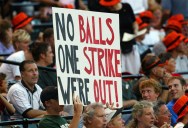This Day In History – September 14th

U.S. PRESIDENT WILLIAM MCKINLEY ASSASSINATED – SEPT. 14, 1901

Photograph of drawing by T. DART WALKER
The assassination of William McKinley occurred on September 6, 1901, inside the Temple of Music located on the grounds of the 1901 Pan-American Exposition in Buffalo, New York. United States President William McKinley was visiting the Exposition and was standing in a receiving line shaking hands with ordinary citizens when he was shot twice by Leon Czolgosz, an anarchist.
McKinley initially appeared to be recovering from his wounds, but took a turn for the worse on September 12, six days after the shooting. Over the course of the next two days his health quickly deteriorated and he died on September 14, 1901. Vice-President Theodore Roosevelt succeeded McKinley as President. McKinley was the third out of four U.S. presidents who have been assassinated, following Abraham Lincoln in 1865 and James A. Garfield in 1881, and preceding John F. Kennedy in 1963. It was after McKinley’s murder that the U.S. Congress passed legislation to officially charge the Secret Service with the responsibility for providing the physical protection of all U.S. presidents. [Source]

Photograph by E. BENJAMIN ANDREWS
By the late 1870s, McKinley had become a national Republican leader. He served in Congress as Representative of Ohio, and also was elected Governor of Ohio. His signature issue was high tariffs on imports as a formula for prosperity, as typified by his McKinley Tariff of 1890. As the Republican candidate in the 1896 presidential election, opposing Democrat William Jennings Bryan, he promoted pluralism among ethnic groups. His campaign, designed by Mark Hanna, introduced revolutionary advertising techniques, and defeated the crusade of archrival Bryan.
McKinley presided over a return to prosperity after the Panic of 1893, with the gold standard as a keystone. He demanded that Spain end its atrocities in Cuba, which were angering Americans; Spain resisted the interference and the Spanish-American War began in 1898. The U.S. victory was quick and decisive, as the weak Spanish fleets were sunk and both Cuba and the Philippines were captured within a few months. As a result of the 1898 Treaty of Paris, the former Spanish colonies of Puerto Rico, Guam, and the Philippines were annexed by the United States as unincorporated territories, and U.S occupation of Cuba began; this occurred in the face of opposition from Democrats and anti-imperialists who feared a loss of republican values. McKinley also annexed the independent Republic of Hawaii in 1898, with all its citizens becoming full American citizens. McKinley was reelected in the 1900 presidential election following another intense campaign against Bryan. [Source]

President William McKinley and his cabinet
RUSSIA DETONATES NUCLEAR BOMB – SEPTEMBER 14, 1954

Photograph via NEOTEO
Totskoye is a military range established in September 1941 to the north of Totskoye village, about 40 km from Buzuluk in Orenburg Oblast, Russia (in Southern Urals) under the jurisdiction of the South Urals Military District. Marshal Georgy Zhukov picked the range for the upcoming nuclear test, which for some 50 years (until 1993) was considered top secret.
In mid September 1954, nuclear bombing tests were performed in Totskoye range during the training exercise Snezhok (Snowball or Light Snow) with some 45,000 people, all Soviet soldiers and officers, who were exposed to radiation from a bomb twice as powerful as the one dropped on Hiroshima nine years earlier. The exercise was commanded by the Marshal of the Soviet Union, Georgy Zhukov. At 9:33 a.m. on 14 September 1954, a Soviet Tu-4 bomber dropped a 40 kiloton atomic weapon from 8,000 metres (26,000 ft). The bomb exploded 350 metres (1,150 ft) above Totskoye range 13 km from Totskoye.
Thousands are believed to have died as a result of radiation, both immediately and in the years following. According to official figures some 45,000 soldiers and 10,000 civilians have suffered as a result of the test. [Source]

Photograph via NEOTEO
LUNA 2 FIRST SPACECRAFT TO REACH THE MOON – SEPT. 14, 1959

Photograph via NASA
Luna 2 was the second of a series of spacecraft launched in the direction of the Moon. The first spacecraft to land on the Moon, it impacted the lunar surface east of Mare Serenitatis near the Aristides, Archimedes, and Autolycus craters. Luna 2 was similar in design to Luna 1, a spherical spacecraft with protruding antennae and instrument parts. The spacecraft also carried Soviet pennants. There were no propulsion systems on Luna 2 itself.
After launch and attainment of escape velocity on 12 September 1959 (13 September Moscow time), Luna 2 separated from its third stage, which travelled along with it towards the Moon. On 13 September the spacecraft released a bright orange cloud of sodium gas which aided in spacecraft tracking and acted as an experiment on the behavior of gas in space. On 14 September, after 33.5 hours of flight, radio signals from Luna 2 abruptly ceased, indicating it had impacted on the Moon. The impact point, in the Palus Putredinus region, is roughly estimated to have occurred at 0 degrees longitude, 29.1 degrees N latitude. Some 30 minutes after Luna 2, the third stage of its rocket also impacted the Moon.
The mission confirmed that the Moon had no appreciable magnetic field, and found no evidence of radiation belts at the Moon. [Source]

The spacecraft also carried Soviet pennants. Two of them, located in the spacecraft, were sphere-shaped, with the surface covered by identical pentagonal elements. In the center of this sphere was an explosive for the purpose of slowing the huge impact velocity. This was designed as a very simple way to provide the last necessary delta-v for those elements on the retro side of the sphere to not get vaporized. Each pentagonal element was made of stainless steel.
The third pennant was located in the last stage of the Luna 2 rocket, which collided with the moon’s surface 30 minutes after the spacecraft did. It was a capsule filled with liquid, with aluminium strips placed into it. [Source]
OPEC IS FOUNDED – SEPTEMBER 14, 1960

OPEC (Organization of Petroleum Exporting Countries) is an intergovernmental organization of twelve developing countries made up of Algeria, Angola, Ecuador, Iran, Iraq, Kuwait, Libya, Nigeria, Qatar, Saudi Arabia, the United Arab Emirates, and Venezuela. OPEC has maintained its headquarters in Vienna since 1965, and hosts regular meetings among the oil ministers of its Member Countries. Indonesia withdrew in 2008 after it became a net importer of oil, but stated it would likely return if it became a net exporter again.
According to its statutes, one of the principal goals is the determination of the best means for safeguarding the organization’s interests, individually and collectively. It also pursues ways and means of ensuring the stabilization of prices in international oil markets with a view to eliminating harmful and unnecessary fluctuations; giving due regard at all times to the interests of the producing nations and to the necessity of securing a steady income to the producing countries; an efficient and regular supply of petroleum to consuming nations, and a fair return on their capital to those investing in the petroleum industry.
OPEC’s ability to control the price of oil has diminished somewhat since then, due to the subsequent discovery and development of large oil reserves in Alaska, the North Sea, Canada, the Gulf of Mexico, the opening up of Russia, and market modernization. As of November 2010, OPEC members collectively hold 79% of world crude oil reserves and 44% of the world’s crude oil production, affording them considerable control over the global market. The next largest group of producers, members of the OECD and the Post-Soviet states produced only 23.8% and 14.8%, respectively, of the world’s total oil production. As early as 2003, concerns that OPEC members had little excess pumping capacity sparked speculation that their influence on crude oil prices would begin to slip. [Source]

OPEC headquarters in Vienna, Austria | Photograph by PRIWO
BUD SELIG CANCELS 1994 SEASON & WORLD SERIES – SEPT. 14, 1994

The 1994–95 Major League Baseball strike was the eighth work stoppage in baseball history, as well as the fourth in-season work stoppage in 22 years. The 232-day strike, which lasted from August 12, 1994, to April 2, 1995, led to the cancellation of between 931 and 948 games overall, including the entire 1994 postseason and World Series. The cancellation of the 1994 World Series was the first since 1904; meanwhile, Major League Baseball became the first professional sport to lose its entire postseason due to a labor dispute.
On July 26, the Players Association executive board set August 12, 1994 as a strike date. When that day came, the players went ahead with their threat to walk off the job. On August 31, three-and-a-half hours of negotiations with federal mediators produced no progress in the strike, and no further talks were scheduled as the strike went into its 4th week. According to then-acting commissioner Bud Selig, September 9 was the tentative deadline for canceling the rest of the season if no agreement was reached between the owners and players. The MLBPA offered a counterproposal to ownership on September 8 calling for a two-percent tax on the 16 franchises with the highest payrolls to be divided among the other 12 clubs. Teams in both leagues would share 25% of all gate receipts under the MLBPA’s plan. The owners responded by claiming that the measures wouldn’t meet the cost.
The rest of the season, including the World Series, was called off by Bud Selig on September 14. Selig acknowledged that the strike had torn an irreparable hole in the game’s fabric. The move to cancel the rest of the season meant the loss of $580 million in ownership revenue and $230 million in player salaries. In 1994, the average MLB salary was an estimated $1.2 million.
The Montreal Expos’ best season in their history was interrupted by the strike. They had the best record in baseball, 74–40, and were six games ahead of the Atlanta Braves in the NL East despite having the second-lowest payroll in MLB. Most baseball writers were considering the Expos as major World Series contenders. Coincidentally, the only time that the Expos actually made it to the postseason was in 1981, the last time that there was a significant players’ strike in Major League Baseball.
Tony Gwynn had a chance to be the first to finish a season over .400 since Ted Williams, as he was batting .394 at the time of the strike. The strike also cost Matt Williams of the San Francisco Giants a chance to beat Roger Maris’ single season home run record. When the strike forced the cancellation of the remaining 47 games of the season, Williams had already hit 43 home runs, on pace to match Maris’ single season record of 61 home runs.

ACTOR PATRICK SWAYZE DIES – SEPTEMBER 14, 2009

Patrick Wayne Swayze (August 18, 1952 – September 14, 2009) was an American actor, dancer and singer-songwriter. He was best known for his tough-guy roles, as romantic leading men in the hit films Dirty Dancing and Ghost and as Orry Main in the North and South television miniseries. He was named by People magazine as its “Sexiest Man Alive” in 1991. His film and TV career spanned 30 years.
Diagnosed with Stage IV pancreatic cancer in January 2008, Swayze told Barbara Walters a year later that he was “kicking it”. However, he died from the disease on September 14, 2009. His last role was the lead in an ill-fated A&E TV series, The Beast, which premiered on January 15, 2009. Due to a prolonged decline in health, Swayze was unable to promote the series. On June 15, 2009, Entertainment Tonight announced the show’s cancellation.
Swayze was married to Lisa Niemi from June 12, 1975, until his death. The couple first met in 1970 when Swayze was 18 years old. Niemi, 14 years old at the time, was taking dance lessons from Swayze’s mother. Swayze and Niemi had no children. In a 2008 interview, Swayze stated that Niemi was the inspiration for his 1987 hit song, “She’s Like the Wind”. [Source]

Trending on TwistedSifter




